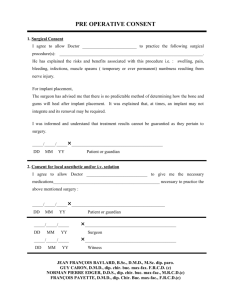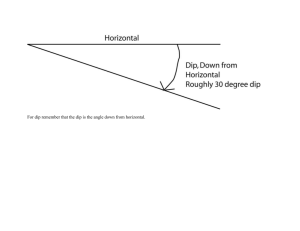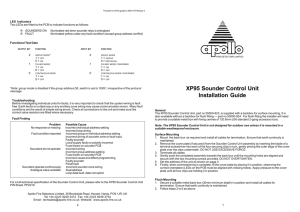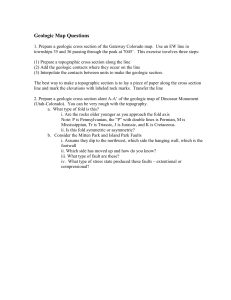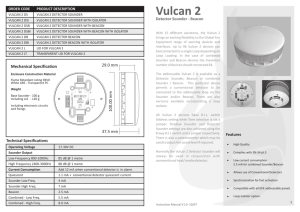XP95A Open Area Sounder Installation Guide
advertisement
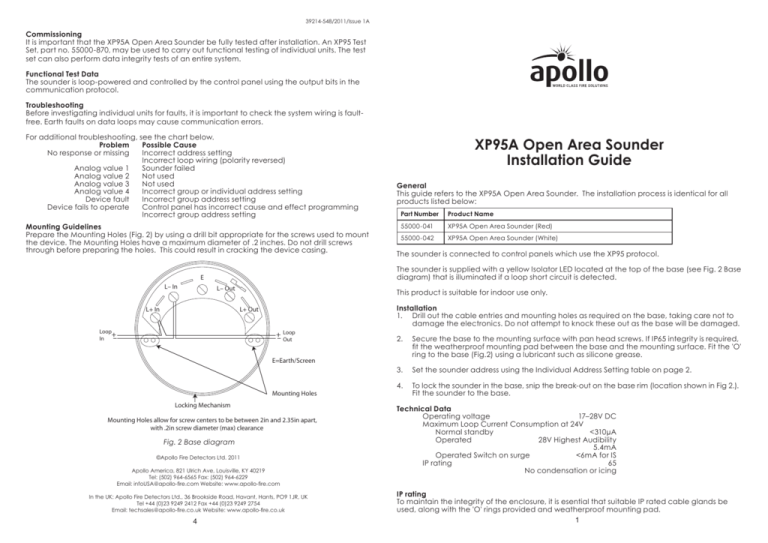
39214-548/2011/Issue 1A Commissioning It is important that the XP95A Open Area Sounder be fully tested after installation. An XP95 Test Set, part no. 55000-870, may be used to carry out functional testing of individual units. The test set can also perform data integrity tests of an entire system. Functional Test Data The sounder is loop-powered and controlled by the control panel using the output bits in the communication protocol. Troubleshooting Before investigating individual units for faults, it is important to check the system wiring is faultfree. Earth faults on data loops may cause communication errors. For additional troubleshooting, see the chart below. Problem Possible Cause No response or missing Incorrect address setting Incorrect loop wiring (polarity reversed) Analog value 1 Sounder failed Analog value 2 Not used Analog value 3 Not used Analog value 4 Incorrect group or individual address setting Device fault Incorrect group address setting Device fails to operate Control panel has incorrect cause and effect programming Incorrect group address setting Mounting Guidelines Prepare the Mounting Holes (Fig. 2) by using a drill bit appropriate for the screws used to mount the device. The Mounting Holes have a maximum diameter of .2 inches. Do not drill screws through before preparing the holes. This could result in cracking the device casing. General This guide refers to the XP95A Open Area Sounder. The installation process is identical for all products listed below: Part Number Product Name 55000-041 XP95A Open Area Sounder (Red) 55000-042 XP95A Open Area Sounder (White) The sounder is connected to control panels which use the XP95 protocol. The sounder is supplied with a yellow Isolator LED located at the top of the base (see Fig. 2 Base diagram) that is illuminated if a loop short circuit is detected. E L– In XP95A Open Area Sounder Installation Guide L– Out This product is suitable for indoor use only. Installation 1. Drill out the cable entries and mounting holes as required on the base, taking care not to damage the electronics. Do not attempt to knock these out as the base will be damaged. L+ Out L+ In Loop +– In +– Loop Out 2. Secure the base to the mounting surface with pan head screws. If IP65 integrity is required, fit the weatherproof mounting pad between the base and the mounting surface. Fit the 'O' ring to the base (Fig.2) using a lubricant such as silicone grease. 3. Set the sounder address using the Individual Address Setting table on page 2. 4. To lock the sounder in the base, snip the break-out on the base rim (location shown in Fig 2.). Fit the sounder to the base. E=Earth/Screen Mounting Holes Locking Mechanism Mounting Holes allow for screw centers to be between 2in and 2.35in apart, with .2in screw diameter (max) clearance Fig. 2 Base diagram ©Apollo Fire Detectors Ltd. 2011 Apollo America, 821 Ulrich Ave, Louisville, KY 40219 Tel: (502) 964-6565 Fax: (502) 964-6229 Email: infoUSA@apollo-fire.com Website: www.apollo-fire.com In the UK: Apollo Fire Detectors Ltd., 36 Brookside Road, Havant, Hants, PO9 1JR, UK Tel +44 (0)23 9249 2412 Fax +44 (0)23 9249 2754 Email: techsales@apollo-fire.co.uk Website: www.apollo-fire.co.uk 4 Technical Data Operating voltage 17–28V DC Maximum Loop Current Consumption at 24V Normal standby <310μA Operated 28V Highest Audibility 5.4mA Operated Switch on surge <6mA for IS IP rating 65 No condensation or icing IP rating To maintain the integrity of the enclosure, it is esential that suitable IP rated cable glands be used, along with the 'O' rings provided and weatherproof mounting pad. 1 Individual Address Setting The address of the XP95A Open Area Sounder is set using seven segments of the eight-segment DIP switch. The eighth segment is used to adjust the volume output. Segments 1-7 of the switch are set to “0” (ON) or “1”, using a small screwdriver or similar tool. A complete list of address settings is shown below. addr 1 2 3 4 5 6 7 8 9 10 51 52 53 54 55 56 57 58 59 60 101 102 103 104 105 DIP switch setting 1234567 addr DIP switch setting 1234567 addr DIP switch setting 1234567 addr DIP switch setting 1234567 addr DIP switch setting 1234567 1000000 0100000 1100000 0010000 1010000 0110000 1110000 0001000 1001000 0101000 1101000 0011000 1011000 0111000 1111000 0000100 1000100 0100100 1100100 0010100 1010100 0110100 1110100 0001100 1001100 0101100 1101100 0011100 1011100 0111100 1111100 0000010 1000010 0100010 1100010 0010010 1010010 0110010 1110010 0001010 1001010 0101010 1101010 0011010 1011010 0111010 1111010 0000110 1000110 0100110 1100110 0010110 1010110 0110110 1110110 0001110 1001110 0101110 1101110 0011110 1010011 0110011 1110011 0001011 1001011 11 12 13 14 15 16 17 18 19 20 61 62 63 64 65 66 67 68 69 70 106 107 108 109 110 1011110 0111110 1111110 0000001 1000001 0100001 1100001 0010001 1010001 0110001 0101011 1101011 0011011 1011011 0111011 21 22 23 24 25 26 27 28 29 30 71 72 73 74 75 76 77 78 79 80 111 112 113 114 115 1110001 0001001 1001001 0101001 1101001 0011001 1011001 0111001 1111001 0000101 1111011 0000111 1000111 0100111 1100111 31 32 33 34 35 36 37 38 39 40 81 82 83 84 85 86 87 88 89 90 116 117 118 119 120 1000101 0100101 1100101 0010101 1010101 0110101 1110101 0001101 1001101 0101101 0010111 1010111 0110111 1110111 0001111 41 42 43 44 45 46 47 48 49 50 91 92 93 94 95 96 97 98 99 100 121 122 123 124 125 126 1101101 0011101 1011101 0111101 1111101 0000011 1000011 0100011 1100011 0010011 1001111 0101111 1101111 0011111 1011111 0111111 Group Address Setting In group mode the XP95A Open Area Sounder responds to an additional address referred to as the group address.It is used to activate groups of sounders simultaneously. Individual units continue to respond to their own addresses and report their status in the normal way. A group address is set on a four-segment DIP switch which is factory set to 0000. A group address may be any spare address within–and only within–the range 112 to 126 inclusive. The required group address is set in accordance with the following table. addr DIP switch setting 1234 addr DIP switch setting 1234 addr DIP switch setting 1234 112 113 114 115 116 1111 0111 1011 0011 1101 0101 1001 0001 1110 0110 1010 0010 1100 0100 1000 117 118 119 120 121 122 123 124 125 126 Example: Individual Address 42 = Volume 100dB = 0 1 0 1 0 1 0 1 ON = 0 O N 1 2 3 4 5 6 7 Individual Address 0 1 1 1 O N 8 Vol 1 2 3 4 Group Address Tone setting Standard = 0 0 5 6 Tone © Apollo Fire Detectors Limited 2006-2007/JD Fig 1 Example of Address and Tone Setting Tone Setting Low Volume (DIP 8 = ON) DIP 5 DIP 6 Output Bits Tone Description 0 Tone 0 010 UL Continuous 2900Hz 70.6 0 0 100 UL ANSI 2900Hz 67.8 0 1 010 New Zealand Pulsed 420Hz 0 1 100 New Zealand 500-1200Hz S/Whoop 1 0 010 Australian Pulsed 420Hz 71.6 1 0 100 Australian 500-1200Hz Whoop 67.3 1 1 010 Standard Pulsed 72.9 1 1 100 Standard Continuous Alternating DIP 5 DIP 6 Output Bits Tone Description Output db(A) at 10 ft Tone 0 0 010 UL Continuous 2900Hz 79.1 0 0 100 *UL ANSI 2900Hz 75.3 0 1 010 New Zealand Pulsed 420Hz 75.9 0 1 100 New Zealand 500-1200Hz S/Whoop 75.5 1 0 010 Australian Pulsed 420Hz 75.2 1 0 100 Australian 500-1200Hz Whoop 71.7 1 1 010 Standard Pulsed 78.3 1 1 100 Standard Continuous Alternating 80.8 71.8 70 75 High Volume (DIP 8 = OFF) Output db(A) at 10 ft Note: All modes above 75 dB are for public use and below 75 dB are for private use only as per UL 464. * NFPA 72 evacuation only tone. Note: group mode is disabled if the group address DIP switch is set to 0000, irrespective of the protocol message. 2 Group Address 113 = 3
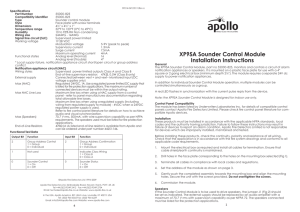


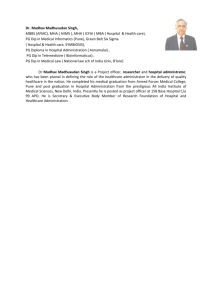
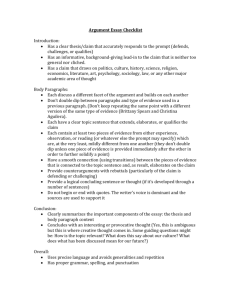
![[#FWDIP-74] PVSS invalid Bits (including range) are not all reflected](http://s3.studylib.net/store/data/007282728_1-8b675e5d894a5a262868061bfab38865-300x300.png)
